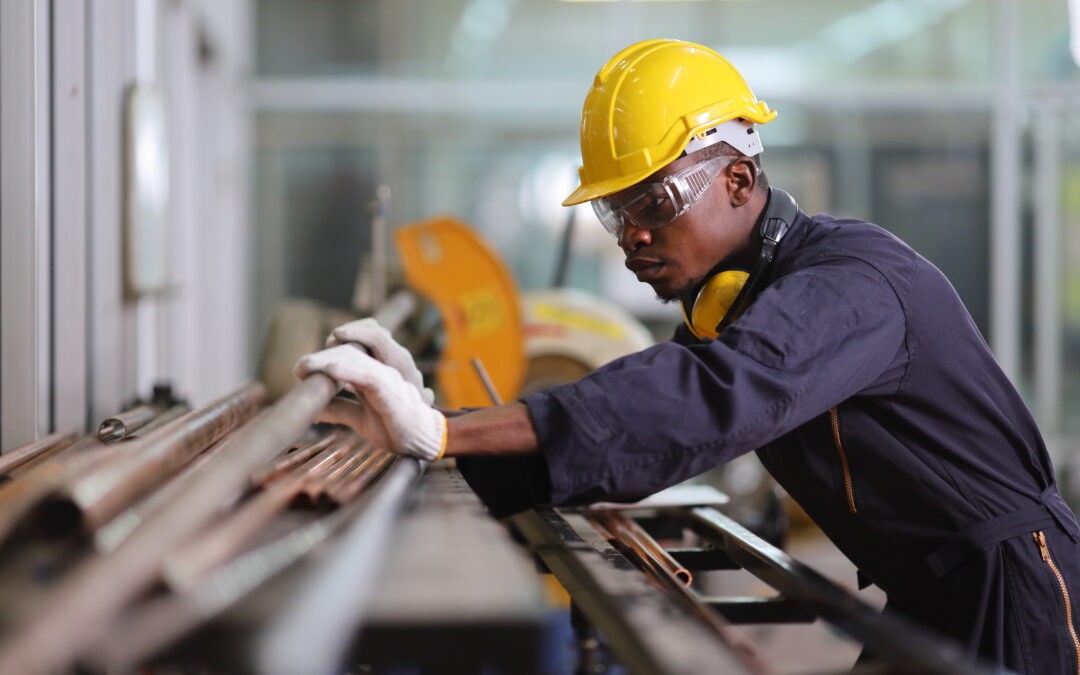Industrial plants can often present hazardous work environments because of dangers like heavy machinery, harmful chemicals, and repetitive physical labor. Understanding the potential risks can better arm you against dangers and help you identify the right time to speak with a legal professional. In this article, we’ll explore some of the most common workplace injuries that plant workers encounter and discuss how an experienced industrial injury lawyer can assist if you or a loved one faces such circumstances.
Crush Injuries
When heavy objects fall onto or press against someone, considerable force or pressure exerted on a part of the body results in crush injuries. Some examples of crush injuries in an industrial setting include:
- A worker’s hand getting trapped between machine parts or under a fallen piece of heavy equipment
- A worker moving a pallet of materials using a pallet jack when it tips over, crushing their foot underneath
- A large machine or piece of equipment could fall on a worker, causing critical crush injuries to larger parts of the body
Crushing can often result in severe injuries, including fractures, broken bones, and in worst-case scenarios, amputations.
Heavy Machinery Accidents
From forklifts and cranes to presses and conveyor belts, working with heavy machinery is common in plants. However, these machines can also cause catastrophic injuries if they malfunction or if there’s negligence. Examples of heavy machinery accidents might include:
- A worker gets caught in a conveyor belt, leading to severe injuries.
- A forklift operator loses control of the vehicle, resulting in a tip-over accident injuring both the operator and possibly nearby workers.
- A mechanical press activates unexpectedly during maintenance or repair.
These accidents can lead to serious injuries such as fractures, severed limbs, or even fatalities. Therefore, it is essential to follow safety protocols when operating or working around heavy machinery.
Burn Injuries
Another common type of industrial injury is burn injuries, or damage to the skin or other tissues caused by heat, electricity, radiation, or chemicals. Some burn injury examples are:
- A worker is involved in the welding process, sparks or molten materials can cause significant burns.
- A worker suffers chemical burns from exposure to corrosive substances without appropriate protective gear.
- A glassblowing or metal smelting worker sustains thermal burns from direct contact with hot surfaces or materials.
Burn injuries can vary from minor first-degree burns, affecting only the outer layer of the skin, to severe third-degree burns, damaging the deepest layers of skin and tissues underneath. Burn injuries can also lead to further complications like infections or other health problems. Regardless of the degree, burn injuries can be extremely painful and may require extensive medical treatment.
Exposure to Harmful Chemicals
Industrial workers can suffer additional health issues, including respiratory problems and even blindness, through prolonged exposure to dangerous chemicals. In plants, such chemicals might include solvents, paints, acids, gas fumes, and more. Some examples of chemical exposure injuries in plant settings include:
- A worker splashes a corrosive acid while handling it without proper protective gear, resulting in chemical burns on the skin or eyes.
- A worker exposed to excessive, toxic fumes from industrial chemicals suffers from respiratory issues like chemical pneumonia.
Long-term exposure to certain chemicals can also lead to chronic health problems, including cancers and neurological disorders. These examples highlight the need for proper safety measures, including protective equipment and adequate ventilation, when dealing with harmful chemicals.
Repetitive Stress and Overexertion Injuries
Repetitive stress and overexertion injuries relate to physical harm caused by consistent strain or overworking of certain parts of the body. Industrial work often involves repetitive tasks, and when a worker repeatedly performs the same motions, it can cause strain to particular muscles, tendons, or nerves. Similarly, overexertion, or pushing the body beyond its physical limits, from pushing, pulling, lifting, or carrying heavy objects can result in serious physical strain. Some examples of these types of injuries are:
- A worker frequently involved in assembly line tasks that require constant, repetitive hand and wrist movements develops carpal tunnel syndrome.
- A worker regularly lifts, pulls, or pushes heavy objects without proper equipment or training suffers from back injuries, pulled muscles, or hernias.
Both types of injuries can result in chronic pain and long-term health issues, emphasizing the importance of ergonomics, safe work practices and regular breaks in the workplace.
Protecting Your Rights After an Industrial Injury
In plant environments where the risks of industrial injuries are higher, awareness of the most common types of injuries can go a long way in prevention. But even with the best safety measures in place, accidents happen. If you or a loved one has suffered any of these or similar injuries, it’s important to seek legal advice from experienced attorneys to help navigate the complexities of personal injury law.
At Talbot, Carmouche & Marcello, we are committed to representing and supporting our clients after an accident. With a long history of representing victims of industrial accidents and a commitment to serving the people of Louisiana, our team of dedicated attorneys is here to help. Contact us today for a free consultation.

